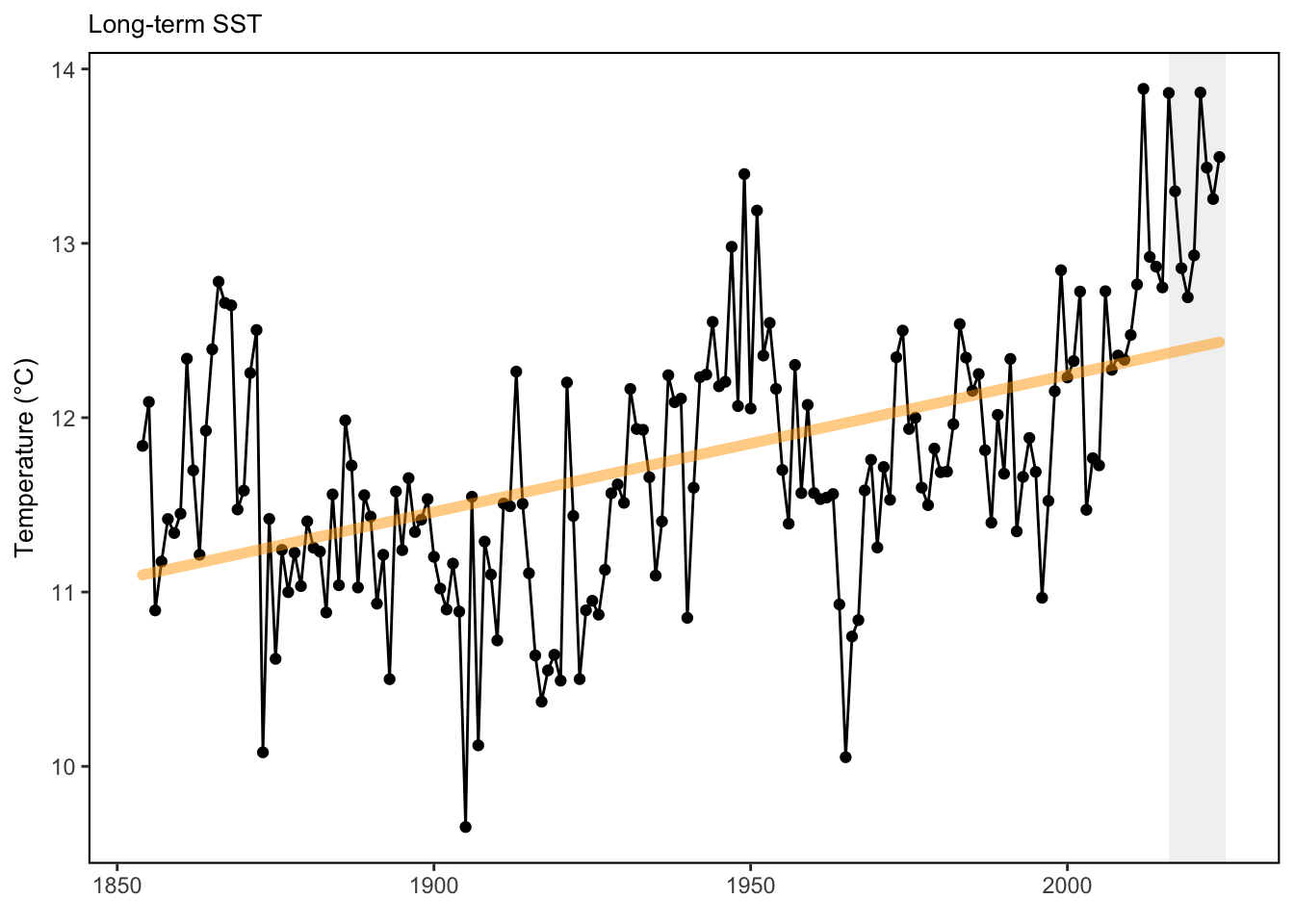SMART Indicator Report: NE Shelf Annual Sea Surface Temperature (SST)
3 Indicator brief description
Average annual sea-surface temperatures from the NOAA extended reconstructed sea surface temperature data set (ERSST V5) on the Northeast Continental Shelf.
4 Indicator visualization
Since the 1860’s, the Northeast US shelf sea surface temperature (SST) has exhibited an overall warming trend, with the past decade measuring well above the long term average.

5 Indicator documentation
5.1 Are indicators available for others to use (data downloadable)?
## Yes5.1.1 Where can indicators be found?
## Data: https://noaa-edab.github.io/ecodata/index.html
## Description: https://noaa-edab.github.io/catalog/long_term_sst.html
## Technical documentation: https://noaa-edab.github.io/tech-doc/long_term_sst.html5.1.2 How often are they updated? Are future updates likely?
[need sequential look at datasets for update frequency. Future requires judgement]
5.2 Gather indicator statistics
5.2.2 Length of time series, start and end date, periodicity
General overview: Annual
Indicator specifics:
Indicator | EPU | StartYear | EndYear | NumYears | MissingYears |
|---|---|---|---|---|---|
long-term sst | All | 1854 | 2024 | 171 | 0 |
5.2.3 Spatial location, scale and extent
General overview: Full shelf
Indicator specifics:
Indicator | EPU |
|---|---|
long-term sst | All |
5.3 Are methods clearly documented to obtain source data and calculate indicators?
## Yes5.3.1 Can the indicator be calculated from current documentation?
[Build link to Tech-doc, look for current and previous methods]
5.4 Are indicator underlying source data linked or easy to find?
[Build link to Tech-doc, look for source, may require judgements]
5.4.1 Where are source data stored?
[Build link to Tech-doc, look for source, may require judgement]
6 Indicator analysis/testing or history of use
6.1 What decision or advice processes are the indicators currently used in?
The data presented here are average annual sea-surface temperatures from the NOAA extended reconstructed sea surface temperature data set (ERSST V5) on the Northeast Continental Shelf.
6.2 What implications of the indicators are currently listed?
Long term SST demonstrates that the annual average sea surface temperatures observed during the most recent ten years are well above the historical average dating back to the 1860s.
6.3 Do target, limit, or threshold values already exist for the indicator?
[Fill by hand; if not in key results or implications, likely does not exist]
6.4 Have the indicators been tested to ensure they respond proportionally to a change in the underlying process?
[Fill by hand; if not in introduction, key results, or implications, likely not tested]
7 Comments
[Fill below by hand once above data complete]
7.1 Additional potential links to management in addition to uses listed above
7.2 What additional work would be needed for the Council to use the indicator?
7.3 What issues are caused if there is a gap or delay in data underlying the indicator